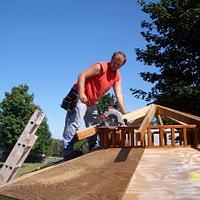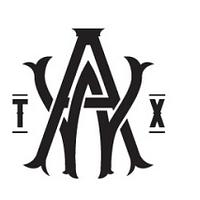
MontyJ
in almost 12 years
Table saw question
I have a Grizzly 1022z. Today I was going to use it to cut 45° miters on a box. Out of curosity, I decided to check the blade to miter slot parallelism. With the blade at 90° it’s within .001. When I tilted the blade and checked it it was out by .020. I turned the blade back up and checked it again and sure enough <.001. What gives here? I ended up using my compound miter saw to make the cuts. It cuts straight and true. The blade has seen better days, but it got the job done. I really want to use the TS for this because it has a better blade, but .020 out is just too scary for me. I’ll call tech support on Monday, but if anyone has any ideas, I would sure like to hear them.
Where are the band-aids?---Pro Libertate!
14 Replies
Check out page 32, I think this will solve you;re problem
http://cdn0.grizzly.com/manuals/g1022_m.pdf
Charlie, I will get a new blade on the miter saw, but it’s only a 10", and doesn’t slide. That seriously limits the width of things I can cut.
South40, thanks for the link. That book is different than the original factory manual that came with the saw. I sure dread taking the trunnion loose now that it’s dead on at 90°. But, if I got it there once, I can do it again.
Where are the band-aids?---Pro Libertate!
Glad I could help, cabinet or table mount trunnion, both have to be “tuned”. The cabinet is much easier…..lol
I don’t have to have it at .001 or less Charlie, but the manufacturers tolerance is .004. Looking through the original factory manual, the 90° tolerance is listed at 1/32" (.03125), but the online version lists the maximum allowable difference as .004. That’s a considerable difference (681%.)! I wonder why the change? My manual doesn’t even show a procedure for adjusting the 45° parallelism.
I know what you’re saying Charlie, but being new to all of this, I’ll err on the side of caution and follow the manufacturer’s latest recommendation. There is an added benefit to tweaking it as close as possible. If something doesn’t fit quite right, I’ll know it’s me, and not the equipment. At this stage of my woodworking development, being able to trust the equipment to be accurate is a huge burden off my mind.
Where are the band-aids?---Pro Libertate!
When I bought the saw and brought it home, the first thing I did was start at the beginning of the manual and go through every step in setting it up. I will happily post scans of the manual, page for page. Nowhere does it mention checking the 45° to slot alignment, nor any backlash adjustments. I did completely clean the saw and lube with spray graphite. I also clean the saw regularly and re-lube it. I’m not OCD, but I take good care of my tools. My manual (nor the online manual) also does not show any way to lock the handwheels, nor does a visual inspection reveal any way to do so. Is there some trick to this?
I did get the 45° to <.001 this morning. I made a couple of shims out of some sheet metal I had and wet sanded them to .027 (the actual difference). I may be making a mountain out of a mole hill, but it’s my mole hill to do with as I choose.
Where are the band-aids?---Pro Libertate!
My saw does have knobs in the center of the wheels. I’ll check them out tomorrow. Of course my manual says nothing about them, I’ll check the manual South40 linked me too. I think for any future projects, I’ll find a way to avoid 45’s all together.
I have that exact article you linked to in a book I bought. I think it’s called 50 top table saw tips or something like that. It’s over in the shop. I’ll get the title tomorrow. It’s been a very handy book.
Where are the band-aids?---Pro Libertate!
My miter saw will be the go to saw for angles, especially after I get a new blade for it. This Grizzly is the first TS I’ve ever owned. It’s right tilt and can be a pain to align, but once there it cuts great. Like anything else, it comes with a learning curve. I’m considering a radial arm saw to handle those wider cuts.
Where are the band-aids?---Pro Libertate!
Monty, once you get it aligned you will be fine. The miter saw and RAS are a good tool to have in the shop, I have both. I also have Powermatic 66 and a Sears 113.xxx contractor saw, I have no idea where the thought crossed anybody’s mind that if you align the trunnions you’re pushing a cabinet or hybrid. You have to align any saw, TS, MS, RAS and band saw, if you want it to perform the way it was designed. The center knob on the cranks should be the elevation and bevel lock.
Charlie, I’m not bringing up the alignment issue again. It was just a general comment.
Anyway, I just happened to run into the elevation lock issue today. I don’t have a dado blade yet, but needed to cut some handles into the sewing box. I used the TS to nibble the waste away, but the longer it ran the lower the blade went. Remembering this thread, I checked the knob on the elevation handwheel and it was tight. I looked in both manuals and both describe the knob as holding the handwheel on, nothing about locking the elevation.
Where are the band-aids?---Pro Libertate!
Checked out page 16 of that link. If I loosen the knob, the elevation wheel wobbles. The knob was tight. If I take the knob off, the wheel falls off. I’m calling tech support in the morning. If I take it apart, I may be able to find a way to shim the elevation shaft so the knob will tighten it. The bevel wheel is the same way.
Where are the band-aids?---Pro Libertate!
I called tech support and as usual, they were very helpful. The knobs are indeed supposed to lock the elevation and bevel wheels. The fix is easy, but I haven’t had time to do it yet.
Remove the hand wheel and washer. Drive out the roll pin. Install a fender washer onto the end of the shaft and reassemble.
Having never owned a table saw before, and this being an older saw, I don’t yet know all of the fine details of how they work, or what might be worn out and not working correctly. The manual says nothing of locking the hand wheels with the knobs.
Where are the band-aids?---Pro Libertate!
Monty, I’d seriously rethink the radial arm saw idea. I’ve owned several over the years and have found them to be less than desirable for accuracy. You are spot on with dialing in your tablesaw for crosscuts. While you certainly need a good blade on your miter saw, a well tuned tablesaw is often the best way to make accurate repeatable cuts. Miter saws are generally not the best choice for crosscuts.
Artisan Woodworks of Texas- www.awwtx.com
The more I use the table saw, the more I trust it. I use to have a 12" miter saw that I sold some years back. I got sick and tired of dealing with blade flex when cutting thicker pieces, especially when beveling. That’s why I bought the 10". But I have noticed that when cutting 45° bevels, especially in ash, I still get some flex. I think from now in I’ll use the miter saw for rough cutting long pieces to length, but turn to the table saw for miters and final length trimming.
Where are the band-aids?---Pro Libertate!
Most of the miter saw (and even table saw) blades sold to the consumer market are thin kerf. The up side is thin kerf blades allow saws with less horsepower to cut more easily. The down side is the blades flex way too easily. Unless you very carefully control feed rate the blade will flex and degrade the cut. Miter saws are fine for what they are, but what they aren’t is a precision machine. In my shop, we use miter saws when necessary, but the final finish cut is often handled by either a table saw or hand plane.
Artisan Woodworks of Texas- www.awwtx.com









